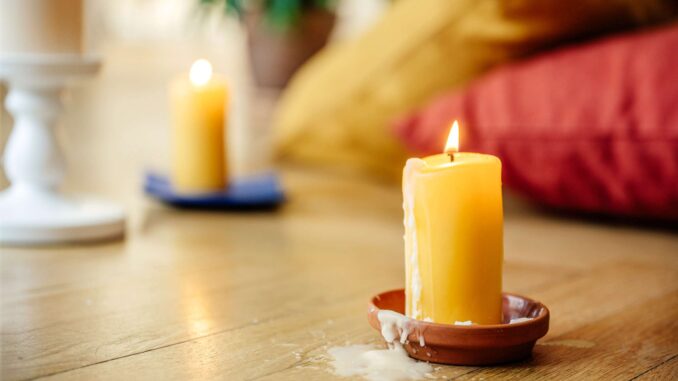
Candle wax spills on wooden furniture are a common but frustrating problem. Whether you’re relaxing with a candlelit ambiance or hosting a lively dinner, it’s all too easy for wax to drip onto the surface and leave a sticky mess. Although it may seem like a tough problem to tackle, knowing how to remove candle wax from wood properly can save your furniture from long-term damage.
In this guide, we’ll take you through step-by-step methods for getting rid of wax stains, the best materials to use, and helpful tips on preventing future spills. Whether you’re dealing with a small wax stain or an extensive mess, we’ve got you covered. Let’s dive into everything you need to know to ensure your wooden surfaces stay looking pristine.
Why Candle Wax is a Problem on Wooden Surfaces
Candle wax is tricky to remove from wood because it solidifies quickly upon contact with the surface. The wax bonds tightly to the wood, which makes it harder to remove, especially if the wood has a porous texture. The nature of the wax means it can seep into grooves and even stain the wood if not addressed quickly. Even if the wax doesn’t seep deep into the surface, it still leaves a visible, sticky residue that’s difficult to clean.
Wax also sticks stubbornly to various wood finishes — whether varnished, lacquered, or oiled. Each type of finish reacts differently to wax, so it’s important to tailor your removal method to the type of wood you’re working with. However, no matter the finish, acting fast is key. Leftover wax can cause permanent stains, dull the wood’s shine, and even damage the surface over time.
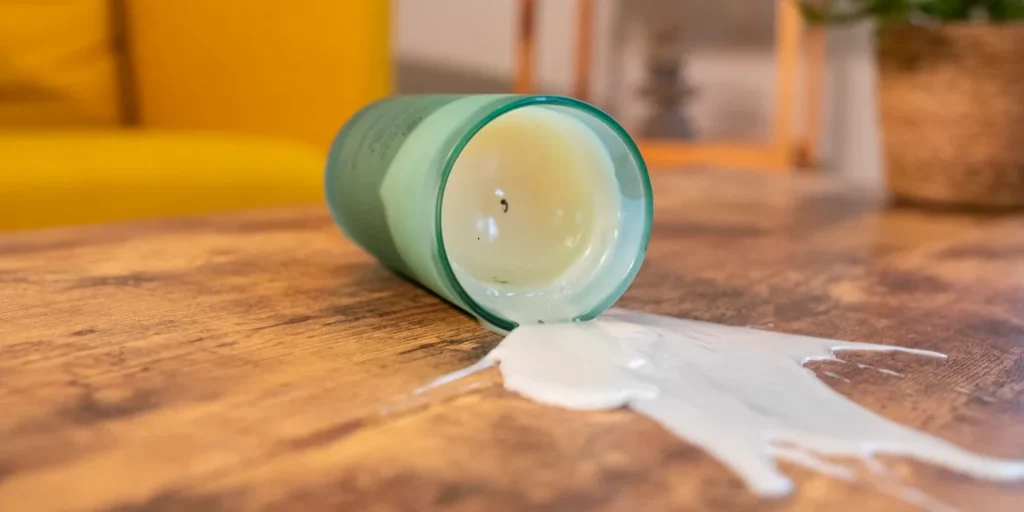
The Tools You Need to Remove Candle Wax from Wood
Before you start working on how to remove candle wax from wood, you’ll want to have the right tools at hand. The following supplies will ensure you tackle the problem with minimal effort and maximum results:
Basic Supplies:
- Ice or Freezer Pack: Using ice helps harden the wax quickly, making it easier to scrape off.
- Plastic Scraper or Credit Card: These non-abrasive tools are essential for gently removing the wax without scratching the wood.
- Paper Towels or Rags: You’ll need these for cleaning up any excess wax or wiping down the surface after you finish.
- Hair Dryer or Heat Gun: These tools help soften the wax to make it easier to remove without damaging the wood.
- Iron and Cloth (Optional): For those who don’t have a heat gun, an iron is a great alternative to melt the wax.
- Mild Soap and Water: After the wax is gone, clean the surface with this solution to remove residue.
- Vinegar Solution: A diluted vinegar solution helps clean off any stubborn spots or wax remnants.
Optional Supplies for Stubborn Wax:
- Goo Gone or Similar Adhesive Remover: These products break down stubborn wax and make removal even easier.
- Mineral Spirits: Helps to remove any remaining sticky residue that may remain after scraping.
- Furniture Polish or Wood Cleaner: After cleaning the surface, polish it to restore the shine.
- Wax Removal Wipes: These commercial wipes are available for quick fixes and are excellent for small jobs.
Having all the right materials at hand before you begin ensures that the task is efficient and effective.
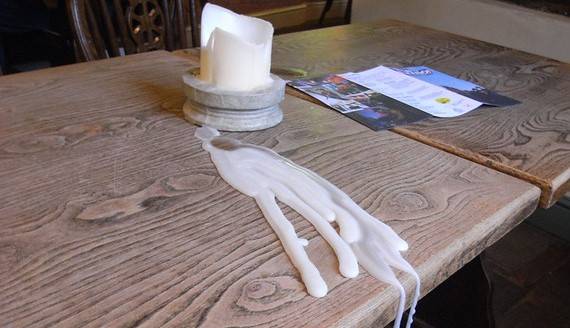
Step-by-Step Guide to Remove Candle Wax from Wood
Now that you have everything you need, let’s walk through the process of how to remove candle wax from wood step by step.
Step 1: Let the Wax Harden
The first and most crucial step in removing wax from wood is to let the wax cool and harden. While it may seem tempting to wipe it off immediately, soft wax will smear and can create an even bigger mess.
Why let it cool?
Allowing the wax to solidify makes it easier to remove and prevents it from getting further embedded into the wood. If you don’t have the patience to wait, you can speed up the process by using ice. Simply place ice cubes in a plastic bag or use a freezer pack over the wax. The cold temperature makes the wax brittle, and it will be much easier to scrape off once it hardens.
Step 2: Scrape Off the Excess Wax
Once the wax has hardened, it’s time to start scraping. Use a plastic scraper or an old credit card to gently lift the wax off the surface. Always use a plastic tool to avoid scratching or denting the wood, which can damage the finish.
Why avoid metal tools?
While it might seem tempting to use a knife or a metal scraper, these can scratch the wood and leave permanent damage. For tricky spots, such as wax in grooves or carvings, you can use the edge of the plastic scraper or an old toothbrush to get into those crevices.
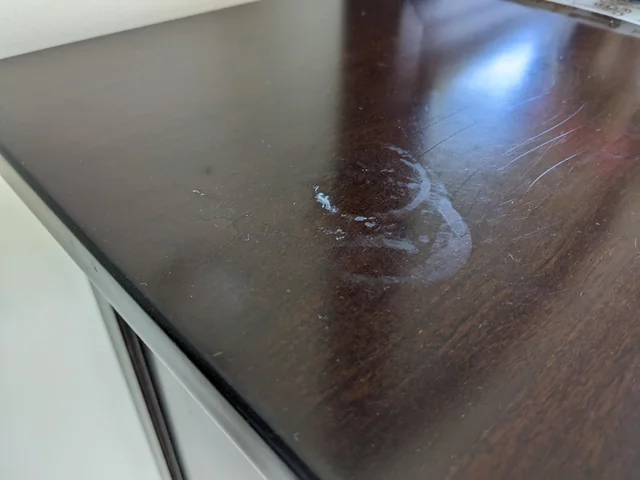
Step 3: Use Heat to Remove Residual Wax
Even after scraping off the bulk of the wax, there may be residual wax left behind. To remove this, you can apply gentle heat to melt the wax, making it easier to wipe away.
Using a hair dryer or heat gun on a low setting works best for this task. Hold the dryer a few inches above the wax and heat it slowly. As the wax softens, use a rag or paper towel to wipe it away.
If you don’t have a heat gun:
You can also use an iron. Place a clean cloth over the wax and press the iron on low heat for a few seconds. The heat will melt the wax, and the cloth will absorb the melted wax. Be careful not to leave the iron in one spot for too long, as it can damage the wood.
Step 4: Clean the Surface After Wax Removal
Once the wax is removed, it’s important to clean the wood surface to eliminate any leftover residue. You can use a mild soap and water solution or a vinegar solution to gently clean the area.
How to clean the wood:
Dampen a soft cloth or rag with the solution and gently wipe the area. Be sure not to oversaturate the wood, as moisture can cause damage. Dry the area completely to prevent water damage, and finish with a quick wipe down using a dry cloth.
If there is any remaining sticky residue, you can apply a small amount of Goo Gone or mineral spirits to a clean cloth and gently rub the spot. Afterward, dry the area thoroughly.
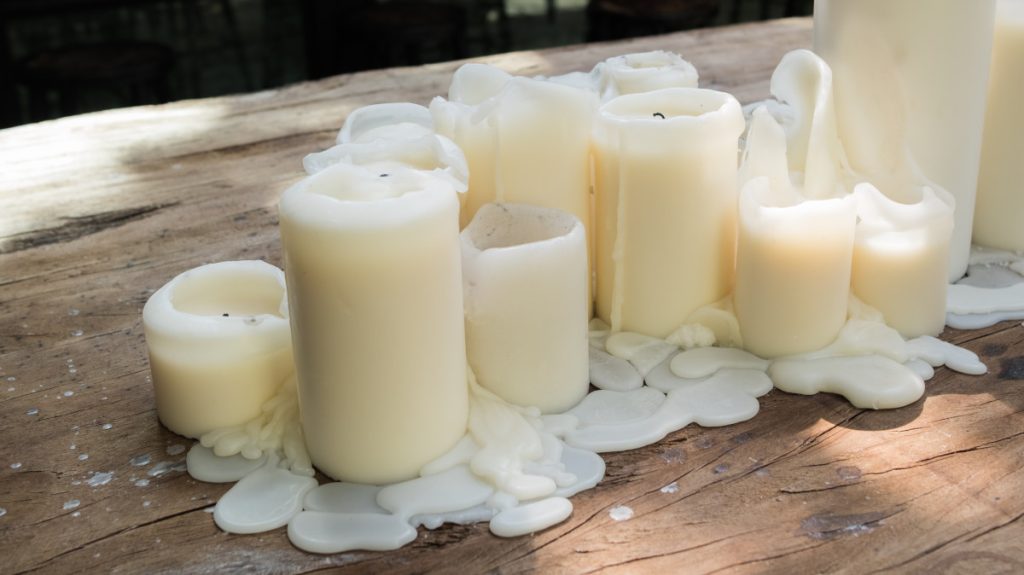
How to Remove Stubborn Wax Stains or Residue
If some wax remains after following the steps above, there are a few more things you can try.
Using Commercial Products
Goo Gone or mineral spirits are often the best options for removing stubborn wax stains. Apply the product to a cloth and gently rub the stained area. Be sure to test any product on a hidden section of the wood before applying it to the entire surface to make sure it doesn’t damage the finish.
Restoring the Wood’s Finish
After removing the wax, your wood may appear slightly dull. To restore its natural shine, apply a furniture polish or wood cleaner to buff the surface. This will bring back the luster and help protect the wood from future damage.
Replenishing oils:
If your wood has an oil finish, consider applying a layer of wood oil to restore its natural oils. This also helps protect the wood from future spills.
How to Prevent Candle Wax Spills on Wood
While knowing how to remove candle wax from wood is valuable, prevention is always better than dealing with the mess afterward. Here are some practical tips to avoid wax spills in the future:
Use Protective Mats or Trays
The simplest way to prevent wax from coming into direct contact with your wooden surfaces is to use a protective mat or tray under your candles. These trays catch any drips before they reach your wood and can be easily wiped clean.
Proper Candle Placement
Make sure candles are placed in stable spots away from the edges of tables or shelves where they could tip over. Additionally, avoid placing candles in drafty areas where uneven melting might cause excessive dripping.
Choose Candles with Drip Protection
Candles with proper containers or built-in drip trays help prevent wax from dripping in the first place. Opt for candles with these features to minimize the chances of a mess.
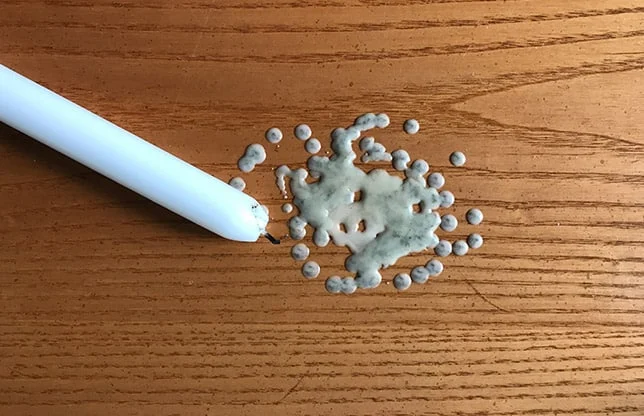
Restoring the Wood After Wax Removal
Once you’ve successfully removed the wax, restoring your wood is important to maintain its appearance. Here’s how you can bring the luster back to your wood:
Polishing and Buffing
After cleaning the wood, apply a quality wood polish to restore its natural shine. Use a soft cloth to buff the surface gently, bringing back its glossy finish.
Using Wood Oil or Wax
If the wood appears dry, wood oil or wax can help replenish its natural oils. These products protect the wood and keep it looking fresh. Apply a thin layer and rub it in evenly.
Reapplying Finish
In cases where the wax removal process has worn down the finish, you might need to reapply a protective finish such as polyurethane or lacquer. This will help protect the surface from future wax spills and keep it looking pristine.
Common Mistakes to Avoid When Removing Candle Wax from Wood
There are several common mistakes to avoid when removing candle wax from wood:
Using Metal Tools
Never use metal tools like knives or steel wool to scrape off wax. These can easily scratch the surface, leading to permanent damage.
Applying Too Much Heat
Excessive heat can warp or discolor wood. Always use moderate heat and test the method on an inconspicuous area before using it on the entire surface.
Rushing the Process
Be patient when removing wax. Rushing can result in damaged wood or an incomplete cleanup. Take your time to ensure the best possible outcome.
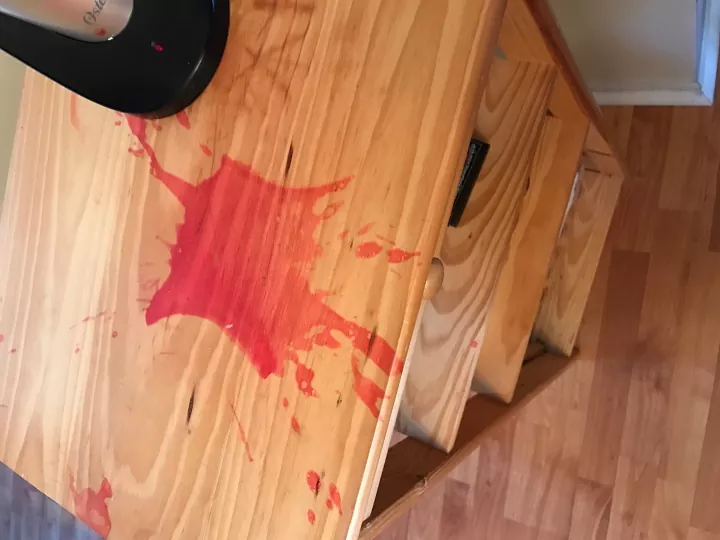
Alternative Methods for Removing Wax from Wood
If the heat and scraping methods don’t work, there are other solutions you can try.
Freezing the Wood Surface
Place ice directly onto the wax to make it brittle. Once the wax hardens, it should be easier to remove.
Using Alcohol or Solvents
Rubbing alcohol can help dissolve stubborn wax residues without damaging the wood. Apply it with a cloth and rub the area gently.
What to Do If You’ve Damaged the Wood During Wax Removal
Accidents happen, and you might accidentally damage the wood while trying to remove the wax. Here’s what you can do:
- Repairing Scratches and Dents: Sanding the affected area and refinishing it can repair minor scratches.
- Refinishing Wood Surfaces: If the damage is extensive, you might need to completely refinish the wood to restore its original appearance.
When to Seek Professional Help
If the wax spill is significant or involves valuable or antique furniture, it’s wise to consult a professional. They can help assess the damage and restore the furniture to its original condition.
Wrapping Up
Knowing how to remove candle wax from wood can save you a lot of frustration and effort. By following the steps outlined here, you can ensure your wooden furniture remains intact and beautiful. With the right tools, patience, and preventive measures, you can easily keep your home wax-free and your furniture looking brand new.
FAQs (Frequently Asked Questions)
Can I use a butter knife to scrape wax off wood?
A butter knife is too sharp and could damage the wood. Use a plastic scraper instead.
How can I remove wax from wood without damaging the finish?
Use plastic tools and avoid excessive heat. Test cleaning products in hidden areas first.
What if the wax leaves a stain after removal?
Try using a wood cleaner or mineral spirits to remove stains. If needed, consider refinishing.
Is it safe to use Goo Gone on my wood furniture?
Yes, but always test it in a hidden area first to ensure it doesn’t harm the finish.
Can I prevent candle wax from dripping in the future?
Yes, using protective mats, placing candles in stable locations, and selecting candles with drip trays will help.